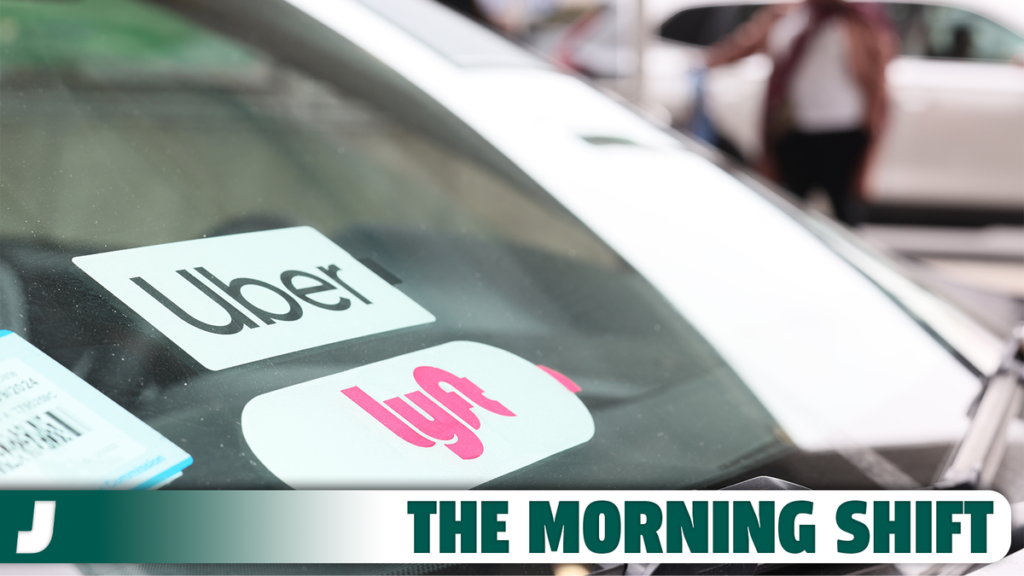Uber Could Pay You To Stop Driving

Happy Thursday! It’s June 27, 2024, and this is The Morning Shift, your daily roundup of the top automotive headlines from around the world, in one place. Here are the important stories you need to know.
2024 Polestar 2: Your Questions, Answered
1st Gear: Uber Might Pay You To Leave Your Car At Home
Do you have a car? Do you live in Chicago, DC, Los Angeles, Miami, San Francisco, Toronto, or Vancouver? Well, Uber would like you to stop driving and take a rideshare instead, if you could. In fact, the company may well pay you for it. From Reuters:
Uber will pay $1,000 in credits to certain commuters in the U.S. and Canada who ditch their cars for five weeks in favor of public and other transport services, it said on Thursday, in its latest effort to drum up business and help reduce emissions.
…
Under the “One Less Car” initiative, Uber will select up to 175 car owners in Los Angeles, Chicago, Washington D.C., Miami, San Francisco, Toronto, and Vancouver, based on certain eligibility, for the five-week program beginning 22 July.
They will get $500 in credit redeemable on the Uber app, a $200 voucher for car rental or carshare services and $300 for use on alternate modes such as public transport.
Given that most of the money comes in Uber credits, it’s pretty clear this effort from the company is mostly just a way to drum up business. It’s a good thought, though — using 4,000 pounds of vehicle to move 150 pounds of human around has never been an efficient means of travel. This post brought to you by motorcycle/ebike/micromobility gang.
2nd Gear: China And Europe Are Still Negotiating Over Tariffs…
The EU is considering levying tariffs on Chinese EVs, on the basis that the nation’s government invests too much of its own money into their development — making it impossible for less-subsidized European offerings to compete. From Reuters:
China hopes negotiations will lead to a “mutually acceptable solution” with the European Union on preliminary tariffs on Chinese electric vehicles (EV) scheduled to take effect on July 4, its commerce ministry said on Thursday.
Beijing wants the EU to scrap plans to impose the curbs, Chinese state media reports, but Brussels has made clear that it expects China to come to technical talks taking place this week with a road map for “addressing the injurious subsidisation” of its EV industry if there is to be a negotiated outcome.
At least the EU is talking things over with China, trying to figure out what the best approach is. The United States, by contrast, is taking a different approach.
3rd Gear: …While U.S. Tariffs Are Already Costing Us Cars
When I drove the Volvo EX30 earlier this year, I came away from the experience with two main takeaways. One, if you fly all the way to Sweden it should be illegal for clouds to cover the aurora borealis. Two, Volvo is really good at building small, fun EVs. It’s too bad we won’t see the EX30 for some time, thanks to tariffs. From Automotive News:
Volvo Cars will delay the U.S. launch of its EX30 electric crossover by about a year due to recently increased U.S. tariffs on China-made vehicles.
In a statement on June 26, Volvo blamed the delay on “changes in the global automotive landscape.”
The Biden administration, aiming to prevent Chinese EVs from flooding the U.S. market, has boosted import tariffs to 102.5 percent this year from 27.5 percent.
The EX30 is currently built in Zhangjiakou, China. Volvo will expand production to a factory in Ghent, Belgium, that will supply the U.S. and Europe.
You read that right: A 102.5 percent tariff on Chinese-built electric vehicles. Not even EVs from Chinese companies, given that Chinese-owned Volvo can dodge the tax by moving production to Belgium. Are American cars really so bad, American automakers really so terrified, that a 102.5 percent tariff is warranted?
4th Gear: CDK Is Slowly Bringing Dealers Back Online
The saga of the CDK cyberattack is one we’ll be dealing with for quite a while, but things may not be quite as dire as they seem. A test from the company brought some dealers back online, as a test, and early reports seem to be going well. From Automotive News:
The CDK Global cyberattack aftermath took a positive turn Wednesday after what the company said was a successful test reboot of a small group of dealers.
…
Ominously, a new market forecast predicts the June 19 attacks and resulting turmoil could reduce June new-vehicle sales by about 100,000 over the previous year.
In an encouraging development, a June 26 announcement by CDK and subsequent update issued to its more than 15,000 dealerships affected by the attacks revealed a test reboot produced promising results.
“We have successfully brought a small initial test group of dealers live on the Dealer Management System (DMS), and once validation is complete, we will begin phasing in other dealers,” the company said in a statement issued to Automotive News.
Having worked at a dealer that used CDK, I assure everyone involved that there are other options with better user experiences, and no cyberattacks. Have you ever used CDK? It looks bad and it now gets hacked. What’s the appeal?
Reverse: More Like RIP 66
On The Radio: FAITH/VOID – ‘Bonehenge’
FAITH/VOID: Bonehenge







